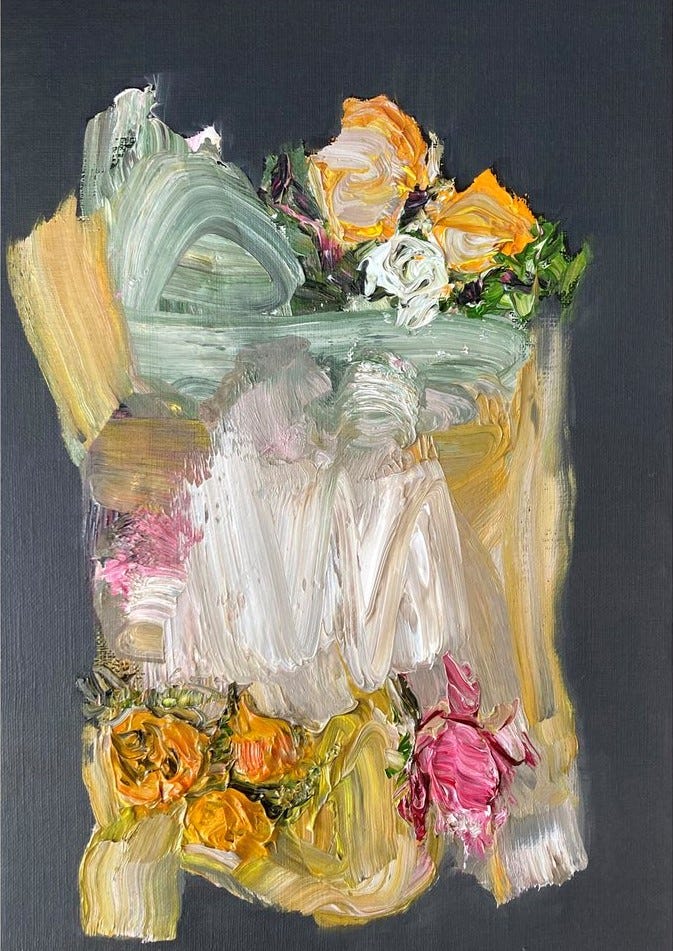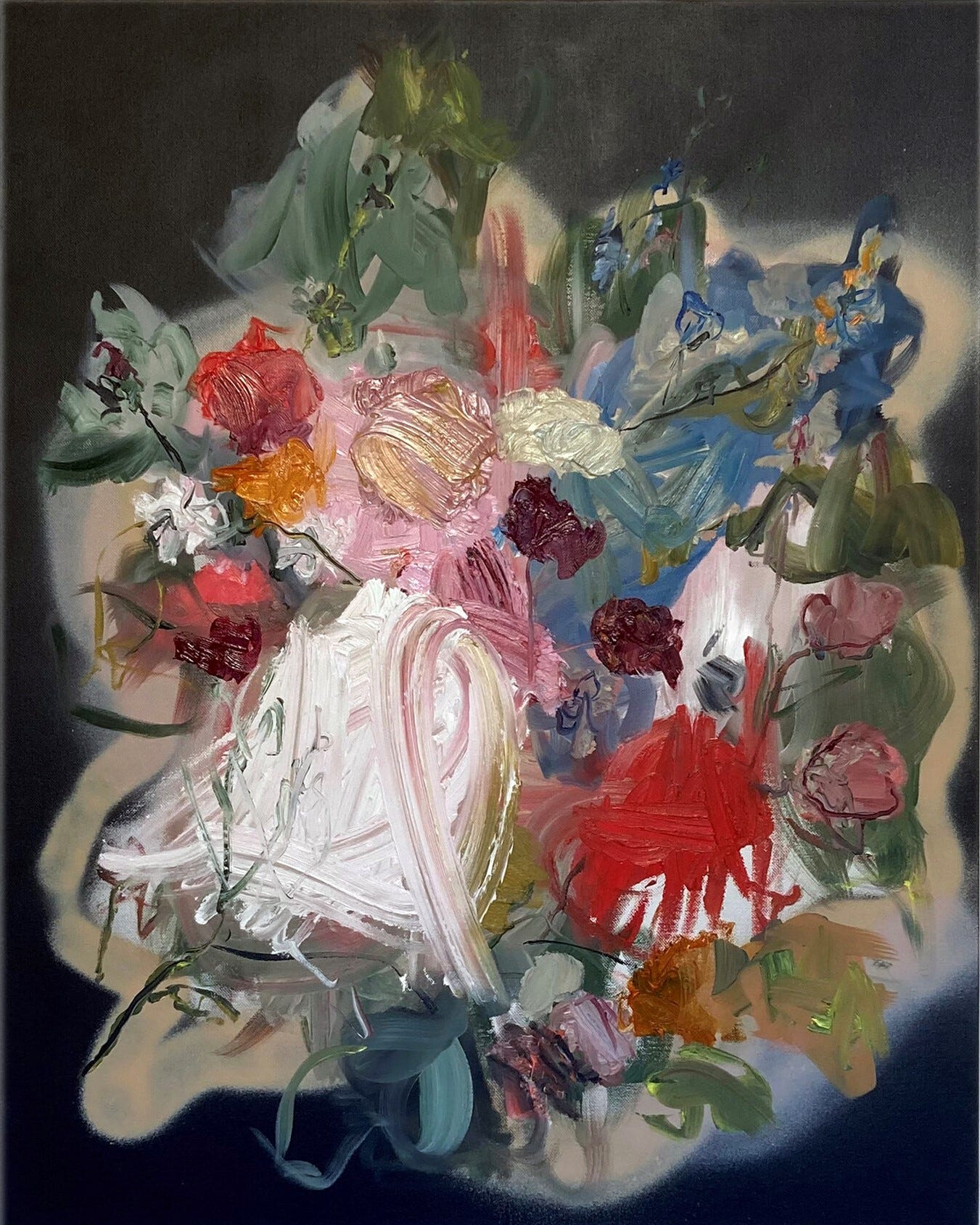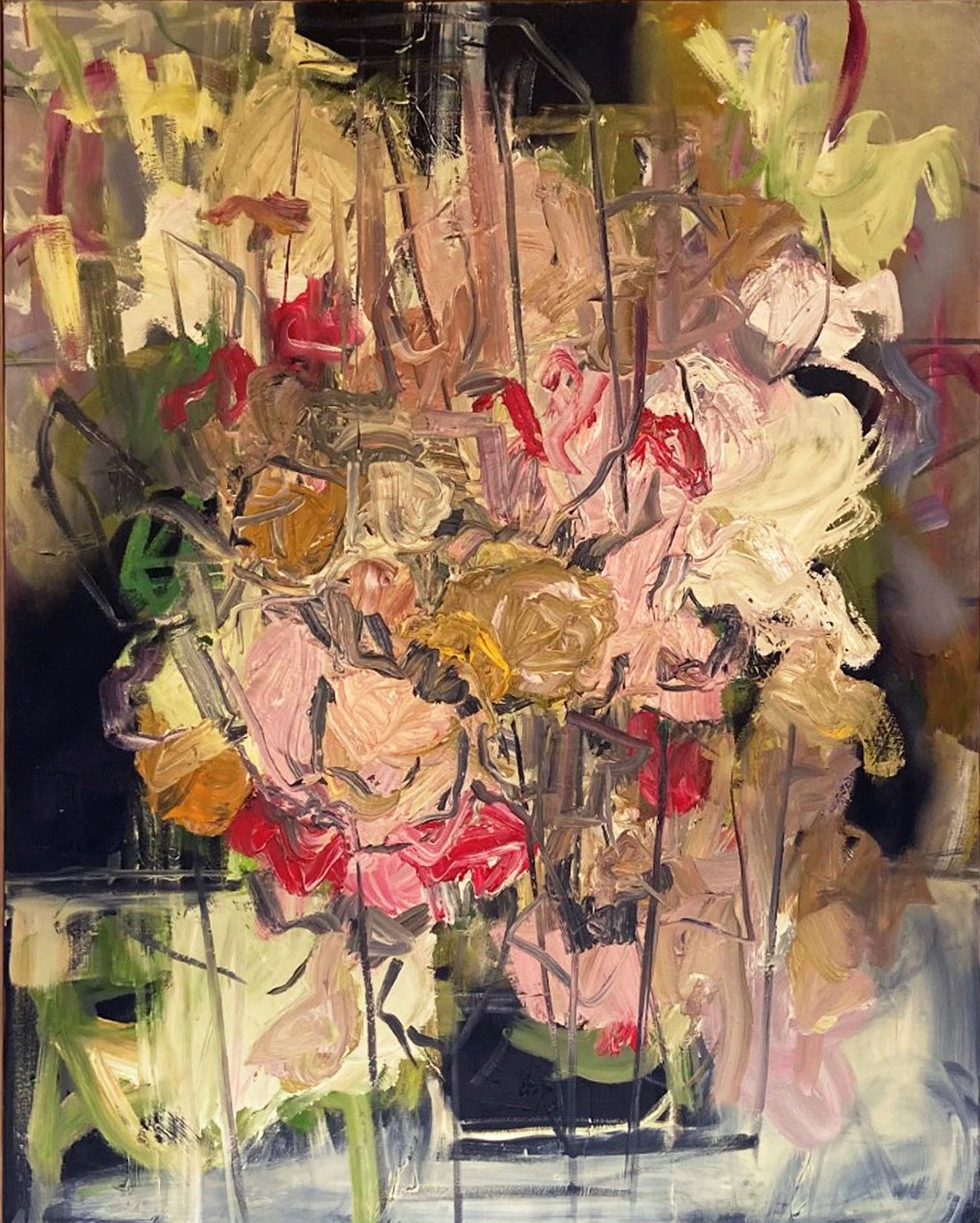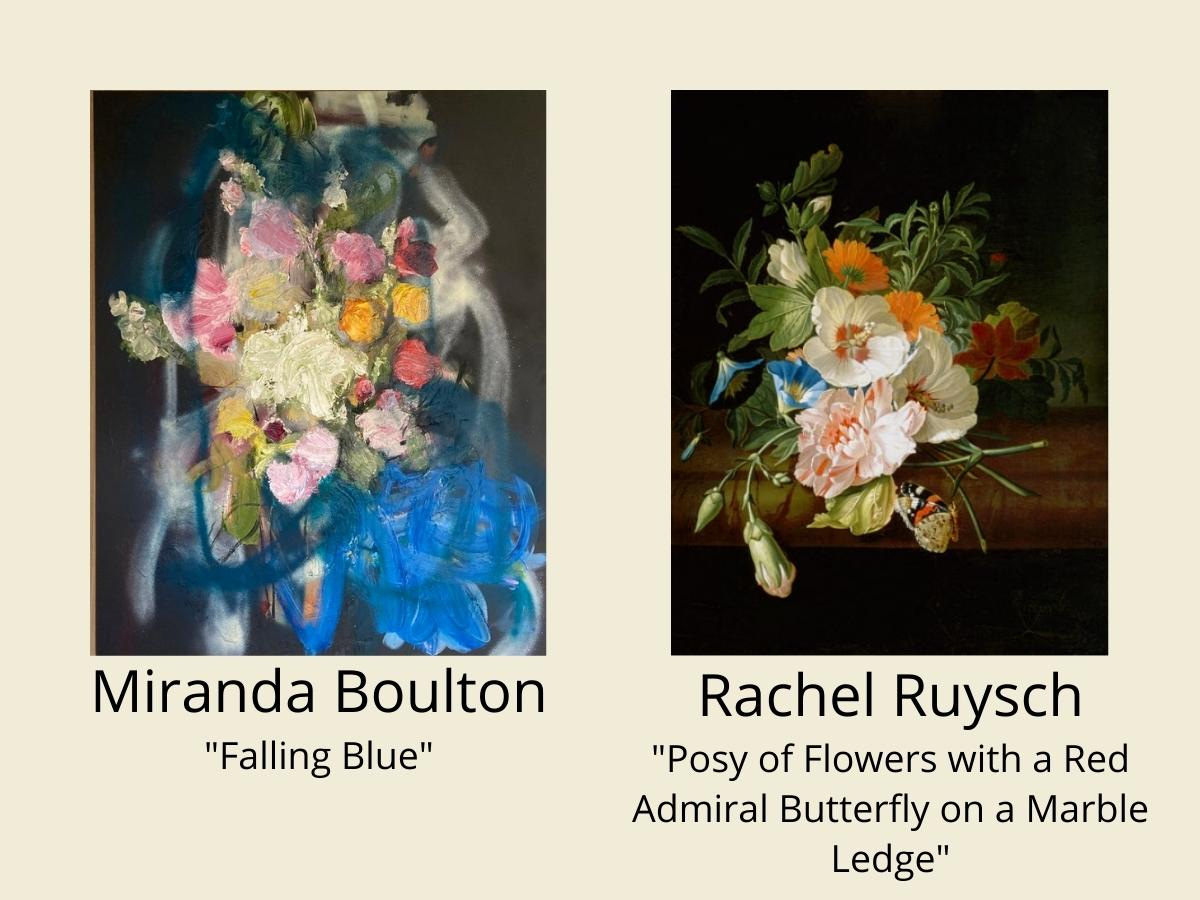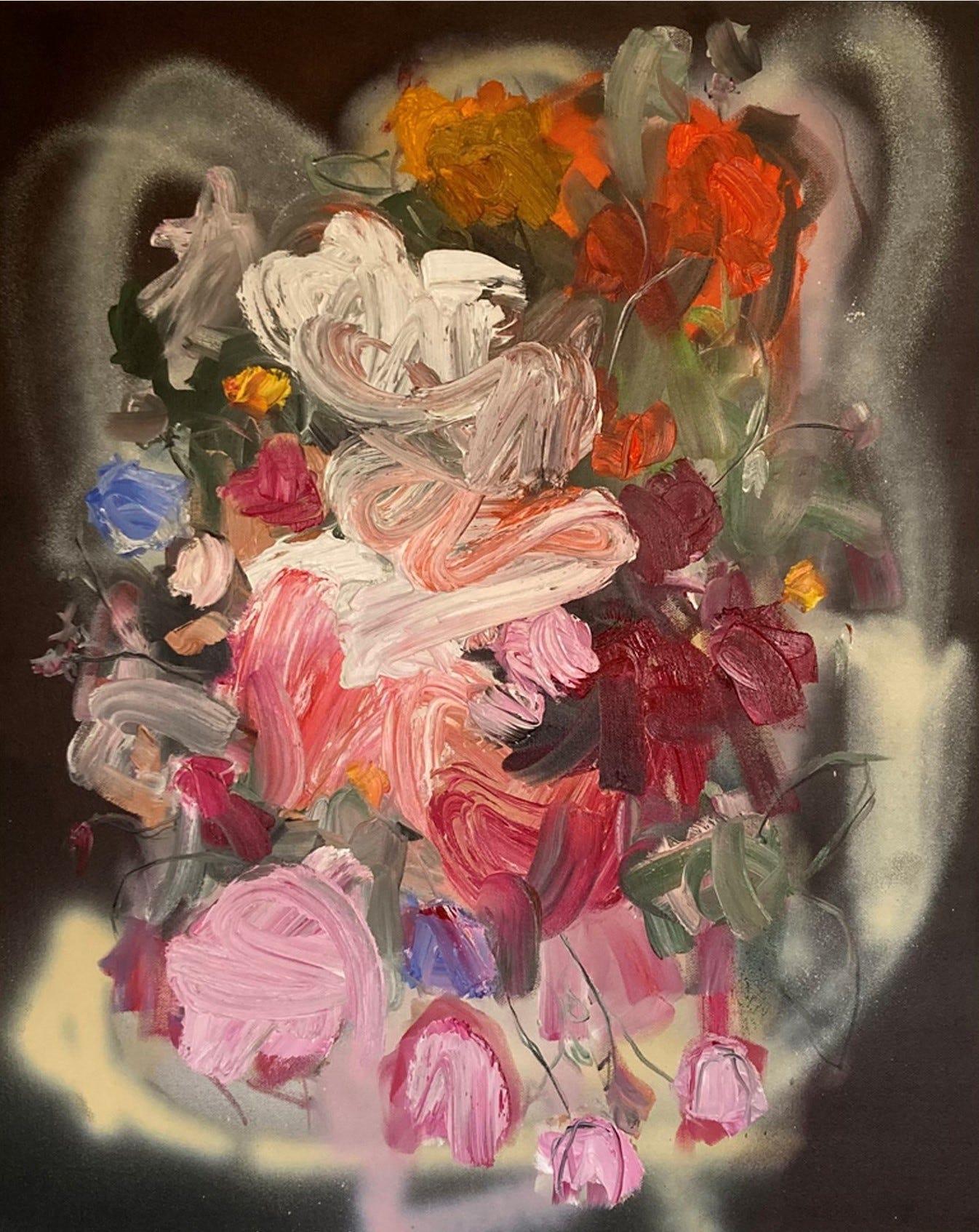Day 51/100: Miranda Boulton
Encouraging a Contemporary Expressive Still Life Painter Who Links Past and Present in Unexpected Ways
Today, for my 100 Days of Encouragement Project, I am celebrating UK painter, Miranda Boulton, who I recently discovered when taking Emily Ball’s Floribunda Online course.
Miranda uses contemporary approaches to the materiality of paint while flirting with the influences of floral painters who have preceded her by decades or centuries.
This conversation between the past and the present is nothing new for her. Growing up, she was soaked in the tradition of artistry. Both of her paternal grandparents were artists. And though her grandfather died before she was born, her grandmother kept his studio just as he left it. As a child, Miranda would sneak into his studio, imagine him there painting, and dream about being a painter herself one day.
Even then, she had already entered this great conversation between the past she had never met (and was nonetheless influenced by), her present moment, and the future she was constructing for herself.
When interviewed about the beginning of her creative journey, Miranda often responds with quotes like this: “Art was always around me when I was growing up; it was always a possibility.” [I am decidedly envious! What a joyous launch!]
She went on to study Art History at Sheffield Hallam University. That degree fueled her fascination with the still life genre and taught her to be a keen observer of how historical artists used paint, color, texture, and composition to capture fleeting moments in powerful ways. But to embrace her own painting style, she had to “desaturate” a bit from the multitude of images and influences of the past, learning how to hold those associations without letting them take the lead.
To that end, she completed a three-year correspondence program with Turps Art School in 2015, and her work has emerged as a beautiful dance between memory and materials. She describes all paintings as being haunted, and she is interested in how her memories of the art that she has seen and the teachers and artists who have influenced her filter through when she is in her studio today. She strives to hold the memory, acknowledge the influence, and then “paint away from the memory.”
One of the reasons that she chooses to paint floral still lifes is the element of time. She considers her paintings to be time-based journeys, like the rings inside a tree trunk that document its growth and story. Flowers hold a particular poignancy, encapsulating the passage of time as they move from bud to decay. This natural phenomenon mingles with Miranda’s understanding of her place in the trajectory of Art History to help her create her emotive still lifes that integrate spontaneity with archetypal intuition.
She’s interested in the clashes between formal elements within her work. She enjoys the tension of bold, gestural marks against areas that she has painted more meticulously. She mixes spray paints with oil paints that she manipulates with brushes, rags, and her hands. It is the diversity of marks that energizes her. And she often turns her canvases around to disrupt her compositional expectations.
Working from the studio at the back of her garden in Cambridge, UK, she finds that she’s in her happy place. Other happy places include the Flower Gallery at the Fitzwilliam Museum in Cambridge, where she was able to see the still life paintings of Baroque master, Rachel Ruysch, in person. These stunning paintings are meticulously crafted explorations of color, bounteous floral variety, and the particularities of light. And you can see the refracted influence in Miranda’s work.
Miranda also loves spending afternoons in Kettle’s Yard, the University of Cambridge’s modern and contemporary art gallery. Their collection is home to British artist, Winifred Nicholson’s Cyclamen and Primula, which I am reminded of in some of Miranda’s paintings. The pale ring surrounding the blooms in Miranda’s “Move Away” painting (2021) reminds me of the luminous tissue wrapped around Nicholson’s pots on the window ledge in her 1923 work.
Another still life artist from the past who tints her imagination and beckons her into conversation is Edouard Manet, especially the floral still lifes that he completed at the end of his life. These final pieces were significant in the development of some of her paintings exclusive to Liberty of London.
But in the end, it isn’t any one artist, it is Art itself — the human desire to express and create —perhaps inherited from the Divine (my thoughts, not necessarily Miranda’s). What Miranda does say in the short film that was made to celebrate her winning the Jackson Paint Prize in 2021, is this:
“When you’re in the studio painting, there are a lot of people in there with you — your teachers, friends, painters from history, critics. One by one, if you’re really painting, they walk out. And if you’re REALLY painting, you walk out.”
Miranda Boulton has an impressive CV – she’s completed prestigious residencies, had work selected for the Royal Academy Summer Show, done exciting solo and group shows, and won a national award with a lovely cash prize — a high honor.
But none of these accomplishments is the reason I’m drawn to her work. There is something so real and revealing and compelling about the way she makes Art History and Contemporary Art accessible for people who know nothing of either.
She makes the floral still life cool!
(And, as a painter who does a lot of floral still lifes, I can only hope that some of that cool rubs off on me!)
How You Can Be an Encouragement
Please check out Miranda’s offerings on Instagram, follow her, and send her some encouragement today by commenting on one of her posts or sending her a direct message.
Instagram: @mirandaboulton
Website: www.mirandoboulton.co.uk






